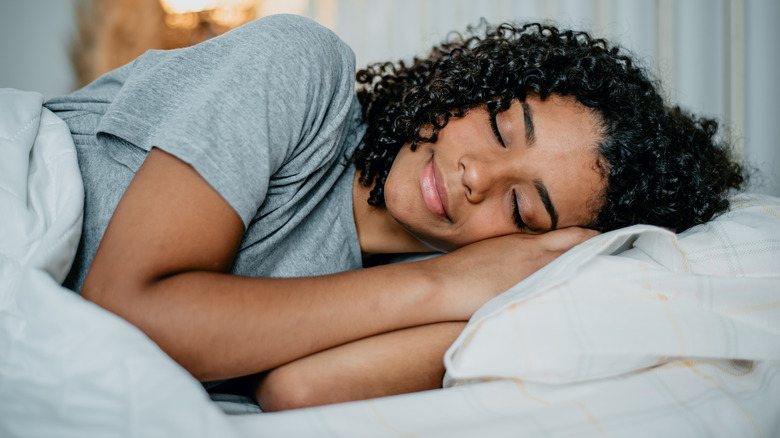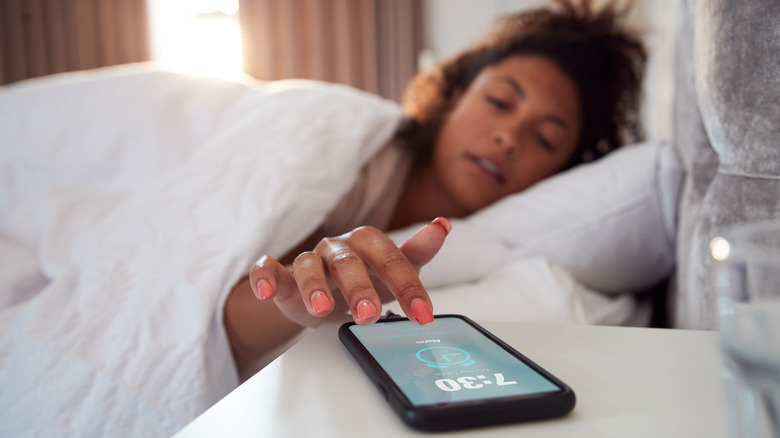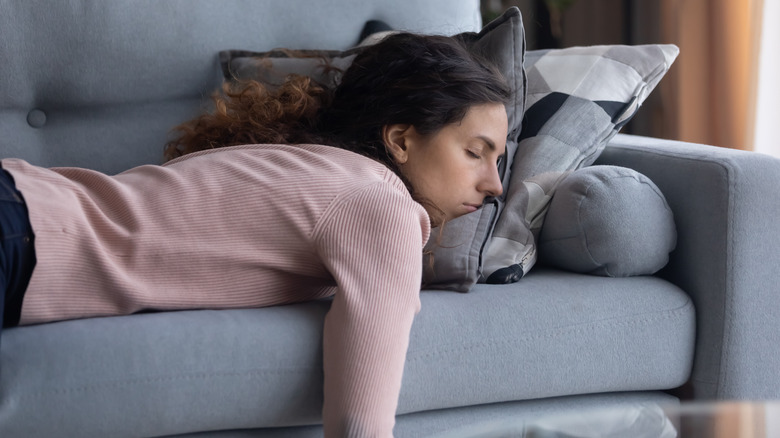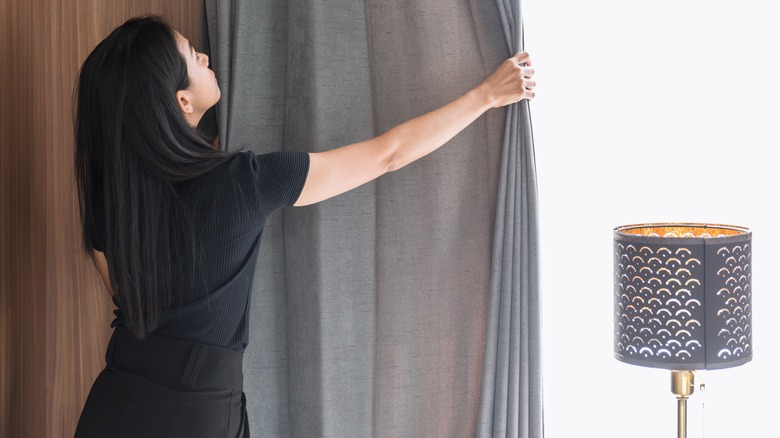The Best Tips For Taking A Refreshing Disco Nap
Life can certainly be tiring (that's an understatement). Between work and personal responsibilities, it often feels like there isn't enough time in the day to do the things we want to, even on the weekends. We all want to have a life outside of work, and sometimes it's hard to muster up the energy to be out of the house after a long day. When you hit that afternoon slump, a disco nap might just save the day so you don't miss out on any fun.
A disco nap, also known as a power nap, is a quick rest during the day to prepare you for a night out or any fun activity that requires your energy. When done correctly, a disco nap can give you a much-needed boost so you can enjoy your free time. But there are a few things to remember to prevent you from messing up your sleep schedule or possibly making yourself more tired.
Keep it brief
If you've ever experienced post-nap grumpiness, it might be because you napped for too long. Experts at the Sleep Foundation recommend 20-30 minutes as the ideal length for a nap, because it allows the body to rest without entering deep sleep. With a quick nap, you'll only enter light sleep, which is much easier to wake up from. Abruptly waking up from deep sleep can make you feel even worse. So when you lie down for your nap, set an alarm so you don't sleep for too long.
In one study, researchers in Spain compared adults who took long naps, short naps, or no naps. The researchers found that participants who took short naps of up to 30 minutes were less likely to have elevated blood pressure compared to the non-nappers. Those who took longer naps of 30 minutes or more were found to have higher blood pressure and a higher prevalence of metabolic syndrome, which can increase the risk of heart disease, stroke, and type 2 diabetes.
Though many experts will recommend short naps, some say that a 90-minute nap could also be beneficial, as it allows you to go through an entire sleep cycle instead of potentially waking up in the middle of deep sleep. "This nap ensures that an entire sleep cycle has taken place, helping avoid grogginess," certified sleep expert Jeff Rodgers, DMD told Healthline. A 90-minute nap may also help if you didn't get much sleep the previous night.
Don't nap too late in the day
According to the Mayo Clinic, it's best to take naps in the early afternoon, no later than 3 p.m. It's common for a lot of people to get sleepy in the afternoon, so it might already feel natural to crave a mid-day snooze. But take heed — Napping too late in the day might make it harder to fall asleep later on.
But if you're looking to nap after a workday, sometimes the only time to nap is a couple of hours before going out. As long as you don't make late naps a habit, you can still maintain a healthy sleep schedule.
The time you nap may also depend on your own personal schedule. You may have to adjust the timing if your body operates on a later schedule. For instance, if you work late or overnight shifts, your sleep schedule looks very different from someone on a 9-5 schedule.
Create a peaceful environment
Unless you're someone who can sleep through a hurricane, it might feel difficult to force yourself to nap during the day. It may help to provide yourself with comfortable, relaxing conditions to allow you to get some rest. This means avoiding stimulating habits and putting away distractions like your cell phone, laptop, e-mails, and turning off the television. But if you find it easier to fall asleep with background noise, a sleep sound machine may be helpful.
Adjust the room to your liking, whether it's turning on the fan or warming up with an extra blanket. Close your curtains to create a dark and peaceful environment. You may even want to try blackout curtains or an eye mask to block out the natural light and put you into a more relaxed state. The goal is to make yourself comfortable so you can recharge for the plans you have later on.



